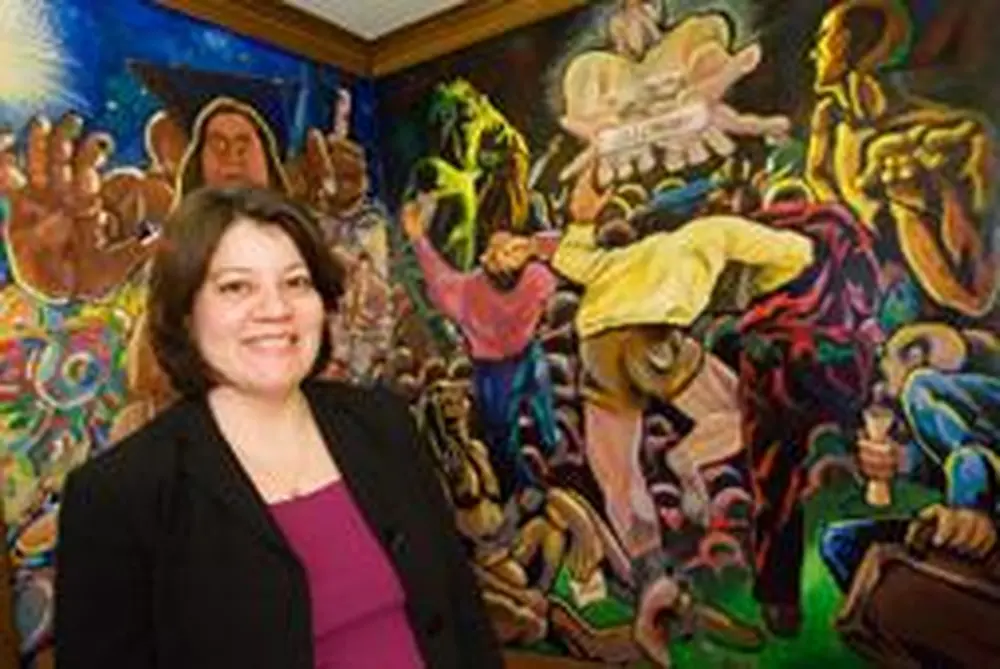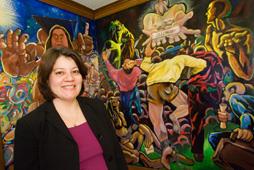

The camera clicks a photograph of a boy's hand. Then the computer inserts the photo of the boy's hand into a long lineup of hands of many colors. The lineup shows exactly where his skin color falls among hands of different shades, ranging from light to dark.
This interactive museum feature, known as "The Colors We Are," underscores one of the primary themes of a new, acclaimed traveling exhibit for which an LAS professor served as a key advisor.
"The overall message is that race is a human invention. Race is an idea that has profound societal consequences," says Arlene Torres, a professor of anthropology and program director for the Latina/o Studies Program who served on the exhibit's advisory board. In other words, all people fall within a continuum of skin colors and racial features, explains Torres. Therefore, dividing us into discrete racial categories is an artificial, human invention.
The traveling exhibit, Race: Are We So Different?, premiered to rave reviews in January at the Science Museum of Minnesota and will travel to other U.S. cities over the next seven years. On Martin Luther King Jr. Day alone, 10,000 visitors filed through the three-part exhibit, which was developed by the American Anthropological Association in collaboration with the museum.
Supplementing the exhibit is a curriculum for middle school and early high school students, as well as a website (www.understandingrace.org), which was a finalist for a prestigious Webby Award as one of the year's best science sites.
As visitors enter the 5,000-square-foot exhibit area, they can travel down one of three routes, each of which takes them into a different section of the exhibit. One part examines the biology of race, another lays out the history of race, and the third section deals with the "lived experience" of race.
For instance, the biology of race shows how the genes that define human variation have traveled across the globe, beginning in Africa, where anthropologists believe human beings originated. Under "The Science of Skin," meanwhile, people can examine their skin under a microscope and learn the evolutionary story of skin color variation.
"We also debunk the idea that somehow we can reliably tell the racial makeup of an individual through language," Torres adds.
In this module, visitors try to match voices with the images of people on a screen; they are inevitably surprised as their preconceived notions of how different people speak do not always turn out to be true.
n the "lived experience" section, visitors confront a variety of issues, such as the economic disparities among races in both housing and income. In one of the theater areas, visitors can also listen to a stream of people of all racial and ethnic backgrounds as they recount their personal stories. There are even conversation areas where visitors can talk to each other about their own experiences with race-or even write down their stories.
"When you walk into the exhibit hall," Torres says, "the most exciting thing are the voices, young and old, of people standing next to each other, looking at the exhibit, talking about their experiences, and learning from one another.
"This conversation is precisely what we want to happen not only within the halls of the exhibit," she says, "but outside the halls as well."